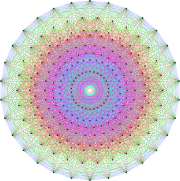
Simple Lie group

In group theory, a simple Lie group is a connected non-abelian Lie group G which does not have nontrivial connected normal subgroups. In group theory, a simple Lie group is a connected non-abelian Lie group G which does not have nontrivial connected normal subgroups. A simple Lie algebra is a non-abelian Lie algebra whose only ideals are 0 and itself (or equivalently, a Lie algebra of dimension 2 or more, whose only ideals are 0 and itself). Simple Lie groups are a class of Lie groups which play a role in Lie group theory similar to that of simple groups in the theory of discrete groups. Essentially, simple Lie groups are connected Lie groups which cannot be decomposed as an extension of smaller connected Lie groups, and which are not commutative. Together with the commutative Lie group of the real numbers, R {displaystyle mathbb {R} } , and that of the unit complex numbers, U(1), simple Lie groups give the atomic 'blocks' that make up all (finite-dimensional) connected Lie groups via the operation of group extension. Many commonly encountered Lie groups are either simple or close to being simple: for example, the group SL(n) of n by n matrices with determinant equal to 1 is simple for all n > 1. An equivalent definition of a simple Lie group follows from the Lie correspondence: a connected Lie group is simple if its Lie algebra is simple. An important technical point is thata simple Lie group may contain discrete normal subgroups, hence being a simple Lie group is different from being simple as an abstract group. Simple Lie groups include many classical Lie groups, which provide a group-theoretic underpinning for spherical geometry, projective geometry and related geometries in the sense of Felix Klein's Erlangen program. It emerged in the course of classification of simple Lie groups that there exist also several exceptional possibilities not corresponding to any familiar geometry. These exceptional groups account for many special examples and configurations in other branches of mathematics, as well as contemporary theoretical physics. All (locally compact, connected) Lie groups are smooth manifolds. Mathematicians often study complex Lie groups, which are Lie groups with a complex structure on the underlying manifold, which is required to be compatible with the group operations. A complex Lie group is called simple if it is connected as a topological space and its Lie algebra is simple as a complex Lie algebra. Note that the underlying Lie group may not be simple, although it will still be semisimple (see below). It is often useful to study slightly more general classes of Lie groups than simple groups, namely semisimple or, more generally, reductive Lie groups. A connected Lie group is called semisimple if its Lie algebra is a semisimple lie algebra, i.e. a direct sum of simple Lie algebras. It is called reductive if its Lie algebra is a direct sum of simple and trivial (one-dimensional) Lie algebras. Reductive groups occur naturally as symmetries of a number of mathematical objects in algebra, geometry, and physics. For example, the group G L n ( R ) {displaystyle GL_{n}(mathbb {R} )} of symmetries of an n-dimensional real vector space (equivalently, the group of invertible matrices) is reductive. A topological group homomorphism from a Lie group G {displaystyle G} to a matrix group is called a representation of G {displaystyle G} , and representations of simple Lie groups are the building blocks of the branch of mathematics called representation theory. Finite-dimensional representations of simple groups split into direct sums of irreducible representations, which are classified by vectors in the weight lattice satisfying certain properties.
